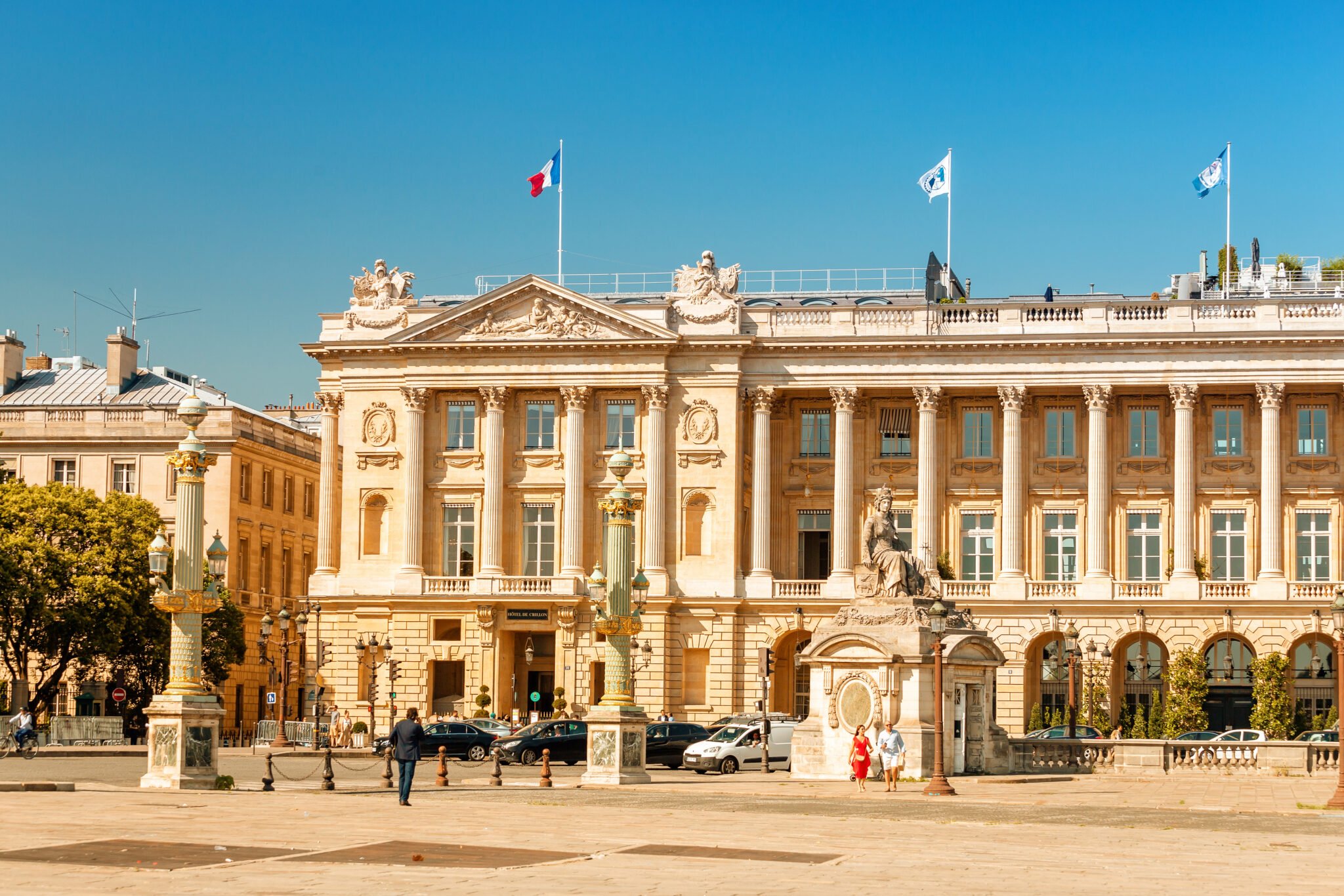Decades ago, Americans visiting Europe favored hotels that reminded them of home—U.S.-based chains with cookie-cutter guest rooms that may have lacked ambiance or authenticity but looked precisely and soothingly like what they would find in Chicago or New York.
Today, savvy travelers want uniquely designed hotels that reflect local culture, often architectural treasures fitting appropriately into their elegant neighborhoods. The challenge for hoteliers: how to retrofit gently aging buildings created for anything but hospitality and turn them into five-star hotels.
In Paris, you can stay at Hôtel de Crillon, a palace built by King Louis XV in 1758, facing the Place de la Concorde. In Vienna, where it’s almost impossible to do new construction in the Ring, there’s Rosewood Vienna, a 90-year-old grouping of five attached buildings that had once been a bank. And in London, right by Covent Garden, there’s One Aldwych, initially a newspaper publishing house where Winston Churchill, no doubt trailing clouds of cigar smoke, once wrote, before running for Parliament.

Let’s take a deeper look at each of the three properties. At the Hotel de Crillon, Benjamin Franklin presented his diplomatic credentials, Marie Antoinette took piano lessons, Ernest Hemingway scribbled in the bar, and Karl Lagerfeld, that legend of Parisian design, created two suites when the hotel underwent its most recent round of renovations.
Lagerfeld’s association with the Hotel de Crillon began when the hotel was closed from 2013 to 2017. During that time, the hotel’s owners asked themselves, what great designer could create opulently magnificent suites for the guests? Who, in the world of fashion, gets the eighteenth century and has a deep love for the architecture, furniture, and history of that era? Whose name symbolizes French couture, even if he might have been born in Germany? Karl Lagerfeld was the only answer.
Lagerfeld had been the creative director of Chanel from 1983 until his passing in 2019. He also ran the Italian fur and leather fashion house Fendi and a fashion label with his name attached. As much as Lagerfeld loved couture, he loved history, art, and literature even more. At the time of his passing, the library in his Parisian home contained no less than 300,000 volumes, many of which focused on his beloved 18th century, and to which he turned for inspiration when designing at Le Crillon.

Next, the Rosewood Vienna opened its doors last summer to its 99 rooms and suites, a restaurant with a terrace garden, a rooftop bar, and a branded spa. The Hotel’s Managing Director, Karl Larmer, wrote to concierges at five of the top Viennese hotels, describing himself as new to the city and seeking recommendations on the best tourist activities to enjoy. To his chagrin, he says, “They all gave me the same standard recommendations that you can find on the first five pages of Google. I couldn’t imagine opening a property and recommending these same obvious activities to our discriminating guests.”
So Larmer took a second, unusual step. He formed a group of ten leading Viennese citizens who provided him with the sorts of recommendations that only true insiders could offer. These included a cobbler whose family has operated its business in the same place for 300 years, a studio where high-end violins are made, and a 90-year-old café a short distance from the new hotel.
“If you want to understand the heart of a city,” Larmer says, “you have to find the hidden gems that make the city unique for its residents. Anyone can point you to the Lipizzaner Stallions, or St. Peter’s Church. We want our guests to experience Vienna from the residents’ perspective. Those are the sorts of experiences they will never find on TripAdvisor.”
And then there’s One Aldwych, a privately owned Edwardian classic designed by the same architectural firm that crafted The Ritz. For decades, the Morning Post and the Illustrated London News occupied the space. Now, it has been converted to house 109 rooms and suites, two restaurants, one featuring Basque cuisine, and a tea room where children indulge in the many treats. The Covent Garden market, the opera house, and West End theaters are all a short walk away.
The building dates from 1910 and became a hotel in 1998. Due to its highly non-standard shape, all bathrooms are of different sizes. That may not mean much to guests, but it caused endless design challenges to the team overseeing the most recent reconstruction process. You can also swim in a chlorine-free lap pool, watch movies in their weekend cinema, and drink cocktails in the cavernous Lobby Bar, once the reception area when the building housed journalists.
So there you have it. Three ways to experience great European neighborhoods while sensing the ghosts of journalists, royals, and fashion designers of the past.










